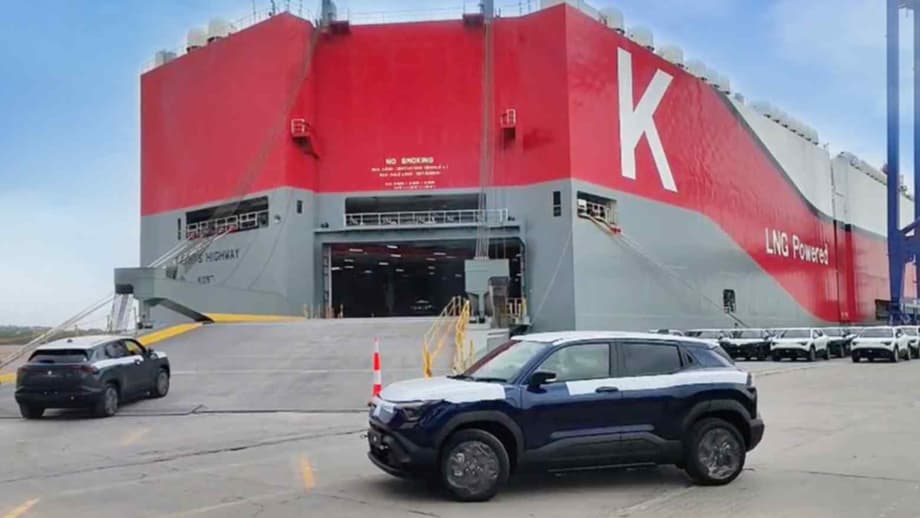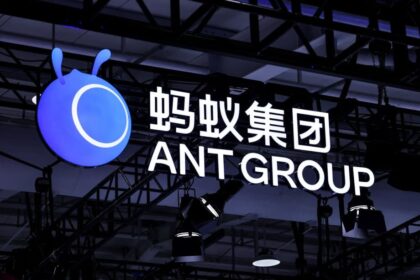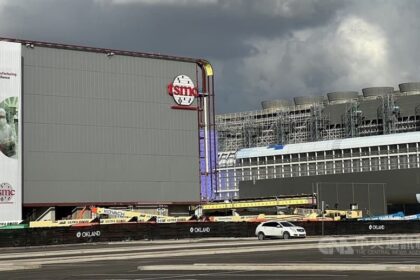Europe opens its ports to India-made cars
Global carmakers are accelerating exports from India to Europe after finding strong traction in Japan, turning Indian plants that once focused on Latin America, Africa and the Middle East into launchpads for developed markets. The clearest signal is electric. Maruti Suzuki has shipped more than 7,400 units of its first battery electric model, the midsize e Vitara, to European countries since production began in August. Government trade data shows shipments to the United Kingdom, Germany, Spain and Norway reached 63 million dollars between April and August, almost nine times the value recorded a year earlier, even if that still represents only a small slice of total car exports. During the seven months from April to October, India exported 514,622 vehicles across segments, a jump that underscores how global brands are rebalancing supply chains and sales footprints.
This shift reflects a new calculus among automakers. Europe’s interest in competitively priced compact cars and sport utility vehicles, rising electric adoption, and a desire to diversify exposure away from China are drawing export programs to India. Indian factories now combine lower costs, a deep supplier base and improving compliance with global safety and emissions norms. The result is a fresh lane for India in Europe, where Chinese brands are growing but also contending with trade scrutiny and new import duties on electric models.
What is driving the pivot from China
Three forces are pushing export programs toward India. First, automakers want to diversify production hubs to reduce concentration risk. Second, trade frictions and new duties on Chinese electric vehicles in Europe are changing price equations. Third, India offers scale, cost efficiency and a regulatory framework that is converging with global standards, backed by policy incentives and improving logistics.
Cost, scale and compliance
Automotive clusters in Gujarat, Tamil Nadu and Maharashtra give manufacturers access to skilled labor, competitive supplier networks and modern ports. Over the past five years, Indian plants have lifted quality and safety performance as domestic rules tightened. Bharat Stage 6 emissions standards, closer to Euro norms, and a new safety assessment program, Bharat NCAP, encourage wider adoption of features such as electronic stability control, six airbags and advanced driver assistance. For export variants bound for the European Union and the United Kingdom, carmakers homologate vehicles against UNECE regulations and Euro 6d requirements, tailoring specifications for crash, pedestrian safety and emissions. These steps make it easier to sell India-built models in markets with strict oversight.
How are trade deals and logistics enabling exports?
Roll on roll off capacity at ports such as Mundra, Chennai, Ennore and Nhava Sheva has expanded, cutting wait times and handling costs. India has also pursued trade pacts that can support auto shipments, including a recent agreement with the European Free Trade Association that, if paired with domestic reforms, can encourage investment and boost integration with European supply chains. Production linked incentive programs are spurring localization of components, electric drivelines and advanced electronics, which helps meet cost targets for export models and reduces currency risk.
Which companies are leading the charge
Maruti Suzuki is at the front of this wave. The company started exporting the e Vitara from its Hansalpur plant in Gujarat in August, sending an initial consignment of about 2,900 units to 12 European countries. In the months since, total shipments have topped 7,400, covering the UK, Germany, France, Norway and several others. Suzuki plans to invest about 1.2 trillion yen by 2031 to expand capacity in India from 2.5 million to 4 million vehicles a year, with India positioned as a key electric vehicle hub. Export momentum is already reshaping its monthly mix. In August, exports accounted for more than one fifth of Maruti Suzuki’s total sales as domestic buyers waited on tax decisions.
Rahul Bharti, senior executive officer for corporate affairs at Maruti Suzuki, said overseas shipments helped offset a temporary slowdown in India’s market in late summer.
“The entire decline in the domestic market has been totally compensated by exports, resulting in almost flat total numbers with about a 0.5% decline.”
Hyundai, Kia, Nissan and Volkswagen build export portfolios
South Korean and Japanese brands have shaped India’s export profile for years, and they are stepping up again. Hyundai plans to invest 5 billion dollars by 2030 to expand products and electrification in India. Kia quickly became one of the top three exporters by volume after launching local production. Nissan uses India as a base for compact models such as the Magnite, which is exported to more than 65 countries, and targets 100,000 export units across financial years 2024 to 2026. Volkswagen has scaled shipments of models assembled at its Chakan and Aurangabad operations. Exports to Europe, still small compared with flows to South Africa, the Middle East and Mexico, are rising from a low base.
Other manufacturers are putting India back on the export map. Ford has explored reopening its Chennai facility for export programs after winding down local retail operations in 2021. Tata Motors, through Jaguar Land Rover, has discussed new manufacturing near Chennai that can serve global markets. The common thread is clear: global companies are aligning India capacity with export-led utilization and electrification plans.
EVs move to the front of the export queue
European buyers are adopting electric models at a pace that far exceeds India, making the continent a natural target for India-built EVs before large scale domestic rollouts. Maruti Suzuki’s e Vitara is the template. Built on a dedicated electric architecture at the Hansalpur plant, the model will eventually be offered in multiple variants, with a claimed range close to 500 kilometers and front wheel drive or all wheel drive layouts. The first wave went to 12 countries, including the UK, Germany, France, Norway, Denmark, Switzerland, the Netherlands, Sweden, Hungary, Iceland, Austria and Belgium. The Indian launch is scheduled after the export push, giving the company time to scale production and validate real world performance in colder climates.
Hisashi Takeuchi, managing director and chief executive of Maruti Suzuki, laid out the reasoning for shipping the electric SUV to Europe first.
“EV penetration in European countries is much higher than in India, making the e Vitara a priority for those markets.”
India’s supplier base keeps the line moving
A strong component ecosystem underpins export readiness. Auto parts exports reached 22.9 billion dollars in the last financial year, with Europe taking 29 percent of shipments. Multinationals such as Bosch and Tenneco operate manufacturing in India, while homegrown suppliers including Motherson Group, Sona Comstar, Bharat Forge and Lumax Group deliver to global quality and performance benchmarks. This maturity allows vehicle makers to localize key systems, from power electronics to safety modules, meeting cost targets while ensuring reliability for European duty cycles.
What the data says about destinations and models
Passenger car exports from India totaled about 671,756 units in financial year 2023 to 2024. Maruti Suzuki led with roughly 42 percent of those shipments, followed by Hyundai at about 24 percent. The Hyundai Verna and Maruti Baleno were among the top exported models, alongside the Maruti Dzire and Volkswagen Virtus. Even as sport utility vehicles gain share in exports, sedans and hatchbacks remain staples in several import markets, including Mexico and South Africa, where compact dimensions and value pricing dominate. Petrol engines still power the vast majority of exported cars, a reminder that the global shift to electric is uneven and segment specific.
Europe’s share is rising from a low base
Exports to the UK, Germany, Spain and Norway were worth about 63 million dollars between April and August, a jump that signals early traction in Europe. The amount represented about 2 percent of total car export value during the period for those markets, so there is room to grow. Shipments to Spain, Norway and Italy increased sharply in the first half of financial year 2026 from negligible levels a year earlier. Across destinations, South Africa accounted for about 17 percent of shipments in recent months, followed by Saudi Arabia, Mexico, Japan and the United Arab Emirates. That historical pattern is starting to shift as more India-built models gain European approvals and as companies line up additional electric and hybrid variants for export.
The export push also serves a strategic purpose inside factories. When domestic sales soften, steady overseas demand can stabilize plant utilization and protect margins. That dynamic is visible in recent months, with exports cushioning inventory adjustments in India’s passenger car market.
Standards and approvals for Europe-bound cars
To sell into the European Union and the United Kingdom, vehicles must pass stringent checks. Emissions rules, such as Euro 6d with real driving emissions testing, require well calibrated powertrains and aftertreatment. Safety regulations and Euro NCAP protocols reward robust structures, advanced restraint systems and driver assistance. Export variants from India typically add or upgrade features like six airbags, electronic stability control, tire pressure monitoring, lane support and automatic emergency braking. Carmakers validate vehicles at Indian agencies and international labs, run corrosion and cold weather tests, and tune software for European traffic and charging infrastructure. Those steps add engineering cost, yet India’s scale and supplier depth help spread the investment across larger runs.
Risks that could slow the momentum
Several constraints merit attention. Shipping capacity for roll on roll off vessels can tighten, raising freight rates and lead times. Regulatory changes in destination markets, such as new battery passport rules or sustainability disclosures, will add documentation and traceability needs across the supply chain. Battery raw materials still depend on imports, and price swings in lithium, nickel and cobalt can pressure margins. Currency movements affect export pricing, and incentives that support localization may evolve. Competitive pressure will remain intense. Consulting forecasts suggest Chinese brands could reach about 10 percent share in Europe by 2030, backed by rapid model cycles and aggressive pricing. India-based programs will need to differentiate on value, durability and aftersales support while keeping pace on software and charging performance.
At a Glance
- India exported 514,622 vehicles between April and October (FY25 to date)
- Shipments to the UK, Germany, Spain and Norway reached 63 million dollars between April and August
- Maruti Suzuki shipped more than 7,400 e Vitara units to Europe since August
- Exports made up over 20 percent of Maruti Suzuki sales in August
- Suzuki plans to expand India capacity to 4 million units by 2031 with 1.2 trillion yen of investment
- Honda will build an electric model in India for export to Japan and other Asian markets
- Passenger car exports in FY 2023 to 2024 were about 671,756 units, led by Maruti Suzuki and Hyundai
- Auto parts exports hit 22.9 billion dollars last year, with Europe taking 29 percent












